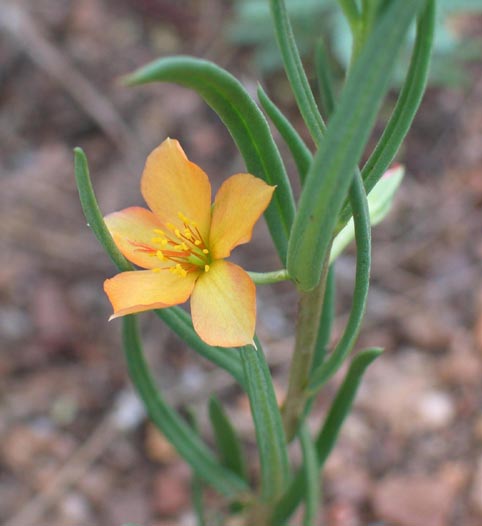
|
Family: Talinaceae |
As circumscribed here, Talinum is a primarily Old World genus with only two species found in North America. Other North American species that usually have been included in Talinum are recognized here under Phemeranthus (which see for discussion).
PLANT: Perennial herbs, caulescent, sometimes suffrutescent, glabrous. ROOTS: fleshy to woody. STEMS: simple or branching. LEAVES: alternate or subopposite, subsessile or shortpetiolate; blades broadly planate, succulent or semi-succulent; margin entire. INFLORESCENCE: in ours terminal and/or lateral panicles; peduncles very short to elongate. FLOWERS: pedicellate; sepals 2, deciduous, distinct; petals 5 or rarely more, distinct, fugacious; stamens distinct; ovary superior, 3-carpellate; ovules many; placentation free-central; style 1; stigmas 3, linear in ours. CAPSULE: tardily loculicidal from the apex, 3-valved, the exocarp and endocarp macroscopically differentiated and separating after dehiscence, the endocarp valves remaining connate at apex, attached to receptacle by vascular strands from capsule apex, persistent, the exocarp valves deciduous separately. SEEDS: many, small, in ours circular reniform and more or less compressed, minutely tuberculate, black, not covered by membrane. x = 12. NOTES: Ca. 15 spp., primarily Amer., Afr. (Apparently from an African vernacular name.) REFERENCES: Allison Bair, Marissa Howe, Daniela Roth, Robin Taylor, Tina Ayers, and Robert W. Kiger., 2006, Vascular Plants of Arizona: Portulacaceae. CANOTIA 2(1): 1-22. Sep 2, caducous; pet 5 (rarely more), distinct, fugacious; stamens 4-45, distinct; filaments slender; ovary ovoid; styles partly or wholly united; capsule 1-celled, many-seeded; seeds cochleate, flattened, minutely roughened; glabrous, succulent, annual or perennial herbs with conspicuous fls in long-peduncled bracteate cymes. Our spp. have a short taproot that in age becomes multicipital, producing from each crown a short stem that has numerous crowded, succulent, terete lvs 3-8 cm, and is prolonged above into a slender scape cymosely branched above and bracteate at the nodes; bracts triangular, 2-5 mm, prolonged backward at base; fls pinkish to deep rosy-red, open for only a few hours in full sunshine; midveins of the capsule-valves often persistent, as well as the placentas; seeds gray over black, 1 mm wide, minutely roughened. 30+, mostly warm N. Amer. Gleason, Henry A. & Cronquist, Arthur J. 1991. Manual of vascular plants of northeastern United States and adjacent Canada. lxxv + 910 pp. ©The New York Botanical Garden. All rights reserved. Used by permission. |
This project was made possible in part by the Institute of Museum and Library Services [MG-70-19-0057-19].
Powered by Symbiota



